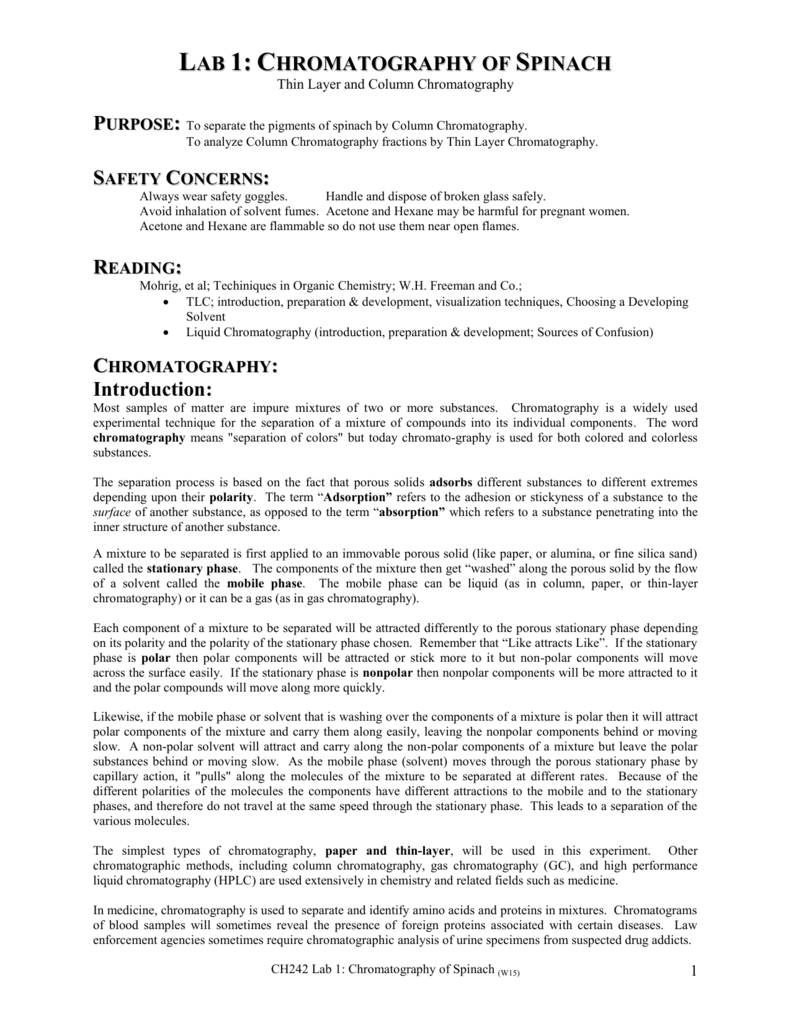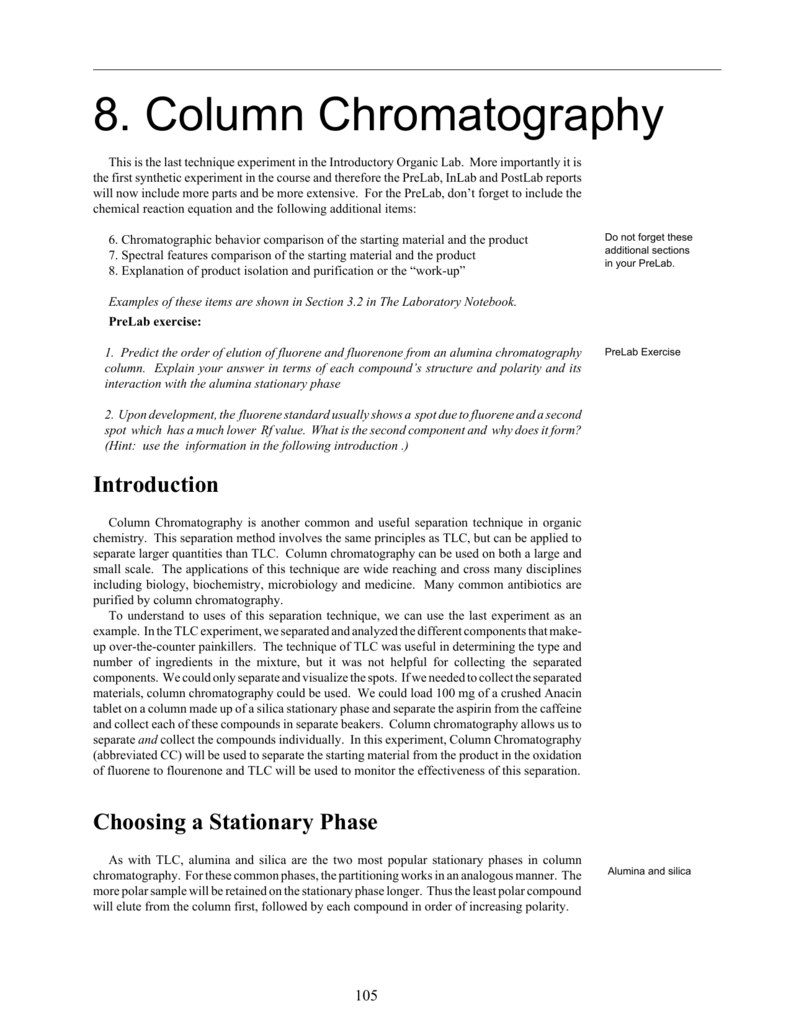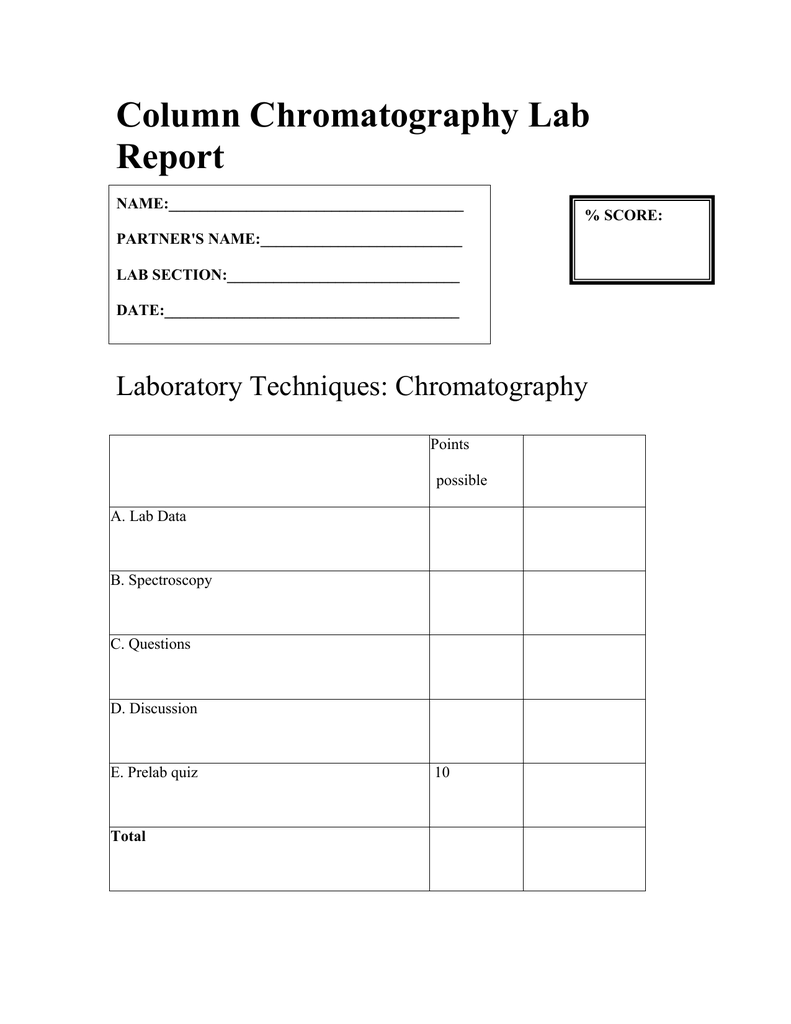column chromatography lab report
Santos October 12 2015 Abstract Column chromatography is the separation of mixtures components through a column. 12 2015 Group A B or C.
Column Chromatography Principle Procedure Applications
Back to School Offer Get 20 of Your First Order amount back in Reward Credits.
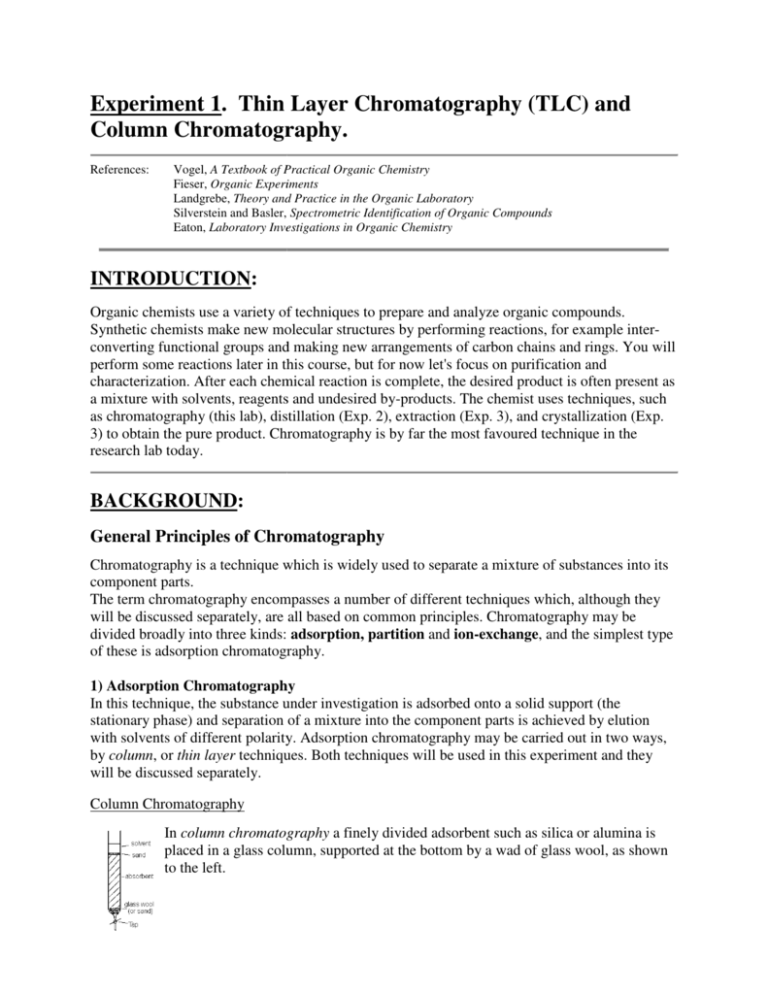
. In column chromatography a mixture of molecules is separated based on each molecules degree of affinity for the mobile and the stationary phases. Column Chromatography Lab Report. The main principle involved in column chromatography is the adsorption of the solutes of the solution with the help of a stationary phase and afterward separates the mixture into independent components.
10ul the flow 05 mlmin pressure bar 3585 and temperature 55ºC. The purpose and goal of this experiment is to separate a mixture of fluorene and 9-fluorenone through the method of column chromatography and then determine the purity of the isolated compounds through thin-layer chromatography TLC as well as melting point analysis. 12 2015 Date Lab Submitted.
You must have an introduction stating what column and TLC chromatography is. Partition column chromatography The stationary phase as well as mobile phase are liquid in partition chromatography. DISSOLVE THE PIGMENTS IN 10 DROPS OF HEXANE.
Please indicate if you. Column Chromatography TLC Lab Reportdocx - Bianca. Essaysio Chromatography Lab Report Example from students accepted to Harvard Stanford and other elite schools.
This appendix focuses on separations using silica gel or alumina. This lab used techniques in column chromatography to separate β-Carotene and Chlorophyll pigments from fresh spinach. Through column chromatography gravity is utilized to move the solvent and.
The spinach was dehydrated using 75 mL of 100 ethanol and stirred for at least three minutes in order to remove the water from the leaves. In the experiment to follow the mobile phase is a buffer solution and the solid phase consists of tiny beads. The procedures described include loading the column assembling the apparatus separating compounds and collecting fractions and optimizing.
At the point when the mobile phase together with the mixture that requires to be isolated is brought in from the top of. Column chromatography involves a mobile phase flowing over a stationary phase. Column Chromatography principle.
12 2015 Date Lab Submitted. I strongly suggest you summarize the experimental procedures from the. Chromatography is the separation of two or more compounds by the distribution between two phases this is usually done based off of the.
Newar Department of Chemistry Physics and Astronomy Milledgeville GA 31061 ABSTRACT The purpose of this experiment is to know how to use TCL chromatography and column chromatography for future experiments because is a. In this lab the. Column chromatography lab report Report all relevant observations including the color and Rf of each spot the order of elution on the.
IMMEDIATELY CLOSE THE TAP. Column Chromatography Lab Report. TCL AND COLUMN CROMATOGRAPHY Paula Sequí López CHEM 3361L Under the supervision of Dr.
Types of Column Chromatography. B Comments for Grading TA. THE TOP SURACE OF THE SILICA GEL JUST BEGINS TO DRY.
Column Chromatography Lab Report. To pack the column silica gel was mixed with 14mL of a non-polar solvent hexane and transferred inside the column. Lab Report Column Chromatography 673 Words 3 Pages.
Sosthene Date Lab Performed. TLC and Column Chromatography Lab Report. Placed the samples into the tray and don.
Melina Rosado Rosales Chemistry 2612 Organic Chemistry Lab Lab Report 4 TLC and Column Chromatography 02-27-17 fIntroduction Chromatography is a technique used to purify individual chemical compounds from a mixture of two or more compounds by taking advantage of the polarity of each individual compound which determines if the compound will. Before use set the condition of HPLC machine first with the injection volume. Column Chromatography and TLC of Spinach Group Experiment 3 Individual Lab Report Save as pdf and submit due by 1200 NOON one week after experiment Last Name.
In this experiment a silica column is used as a stationary phase to aid the separation by providing an interaction for the compounds in the solution besides the solvent. Chromatography TLC Introduction. Please indicate if you.
1mm of sand was delivered to the column so that it would sit atop the silica gel bed. State the purpose of the experiment. This preview shows page 1 - 3 out of 6 pages.
October 8 2014 Biochemistry Laboratory Meghan Phifer Lab Partners. The theory of column chromatography is the separation of compounds mixtures in a solution by their differences in polarities using different solvents of different polarities. Before proceeding with the column chromatography itself a proper solvent system must be chosen among.
These determinants will help decide which eluent should be selected for the chromatography process. B Comments for Grading TA. TO THE TOP OF THE COLUMN.
Sosthene Date Lab Performed. DRAIN THE EXCESS HEXANE FROM THE COLUMN UNTIL. Sue Wang TA Name.
Analysis Lab Report Flash-Column Chromatography Introduction Flash-Column Chromatography is another useful technique used to separate and purify complex mixtures of compounds. Alex Dahms and Mitch Vetter Experiment Six. One technique for doing this is chromatography.
Bixin was then isolated from the mixture through the use of the. Column chromatography is used extensively in nucleic acid chemistry to purify or characterize products from chemical reactions. USING A LONG PASTEUR.
12 2015 Group A B or C. Bianca Alvarado Organic Chemistry I CHEM-2612-0A1 October 12 2020 Experiment 4. Adsorption column chromatography Adsorption chromatography is a technique of separation in which the components of the mixture are adsorbed on the surface of the adsorbent.
Summarize in your own words the experimental procedures carried out in the three videos. Column Chromatography of Food Dye Arianne Jan D. In this experiment TLC is used to determine the best solvent system for the column.
If the compound is polar the Rf value is close to 0 then the compound is very polar and has little to no affinity in the mobile phase. SIX DROPS OF THIS MIXTURE. To load the column about 3mL of the mixture of fluorine and 9-fluorenone was delivered which was visible by a yellow band.
Sue Wang TA Name. The purpose of conducting the column chromatography lab is to separate and purify solids and liquids. Get 20 of Your First Order back in Rewards.
Proteins are most often separated by column chromatography in which a mixture of. Chromatography is used to separate. Chromatography is the separation of multiple mixtures into their components as a result of their molecular interactions with a mobile phase and a stationary phase Keller et al.
By taking advantage of a particular property of a mixtures compounds the compounds can be separated from one another. 瀀瀀ract The purpose of Isolation of Bixin from Annatto Seeds using Column Chromatography was to separate and purify macroscopic amounts of pure bixin compound from annatto seed ex-tract1 A mixture of bixin methylbixin and norbixin were extracted from annatto seeds. Affinity in the stationary phase.
Column Chromatography and TLC of Spinach Group Experiment 3 Individual Lab Report Save as pdf and submit due by 1200 NOON one week after experiment Last Name.

Doc Chromatography Lab Report Vlada Panina Academia Edu

Conclusion In The Thin Layer Chromatography Experiment As The Mobile Phase Rose Course Hero

Column Chromatography Lab Report Great College Essay

Experiment 1 Thin Layer Chro Column Chromatography In Layer

Lab Report Column Chromatography Column Chromatography Pre Lab Purpose The Purpose Of Conducting Studocu

Thin Layer Chromatography Lab Report Dentalimplantsurgery Com Custom Academic Help
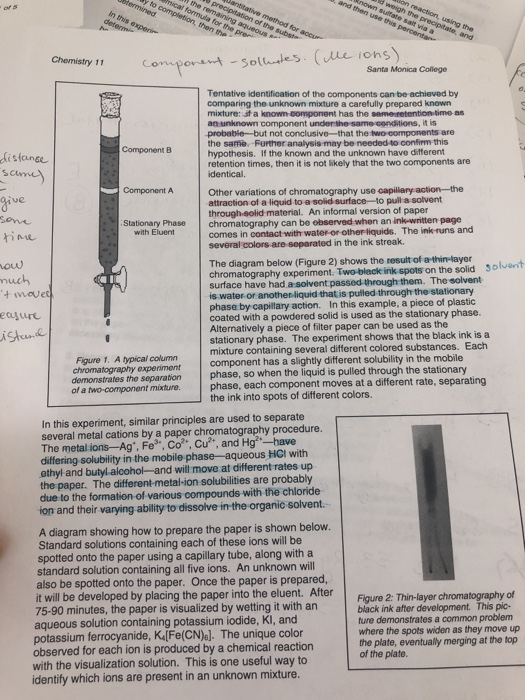
Solved Lab Report For Paper Chromatograpny Soluent Frent 6 Chegg Com

Solved Practical 1 Thin Layer Chromatography Of Plant Chegg Com

Column Chromatography Lab Report Golden 1 Hannah Golden 18 March 2008 Flourenone Synthesis And Column Chromatography Introduction Chromatography Course Hero
![]()
Thin Layer Chromatography Lab Report Docsity
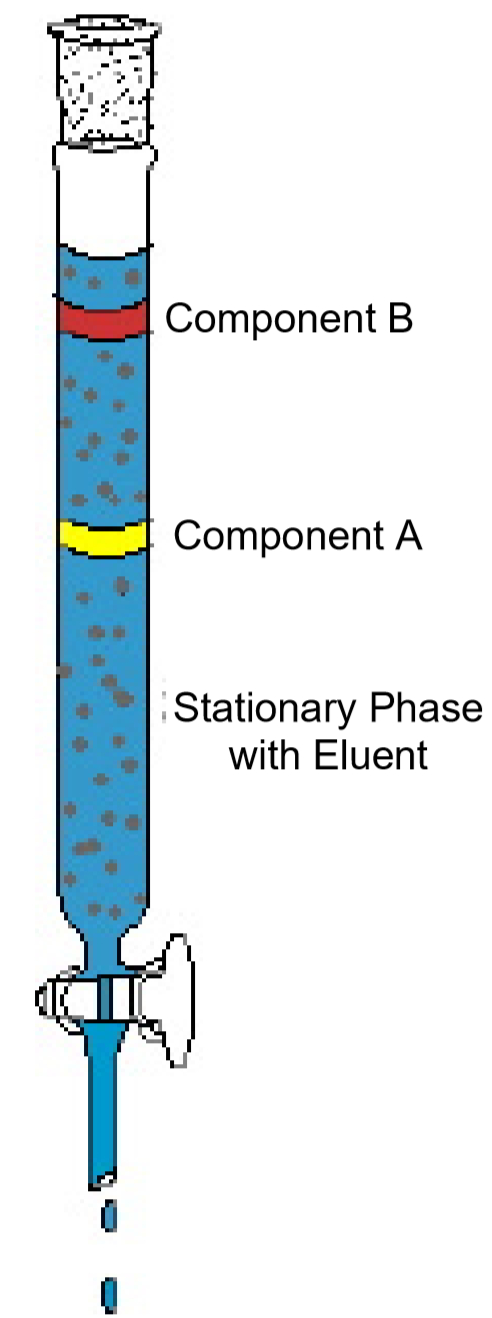
3 Paper Chromatography Separation And Identification Of Five Metal Cations Experiment Chemistry Libretexts

Thin Layer Chromatography Mark Buluma Eugine Academia Edu

Pdf Chromatography Hplc Lab Report

Pdf Applications Of Column Paper Thin Layer And Ion Exchange Chromatography In Purifying Samples Mini Review
